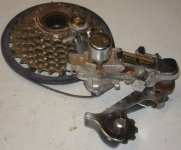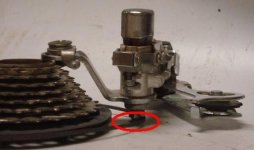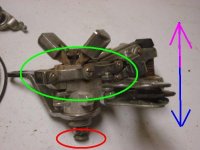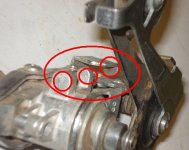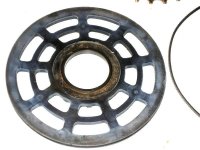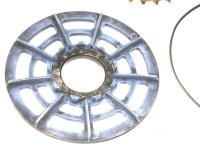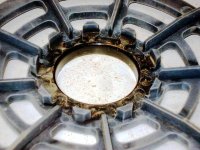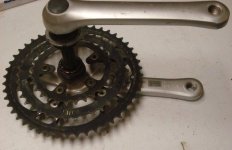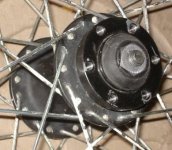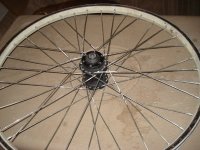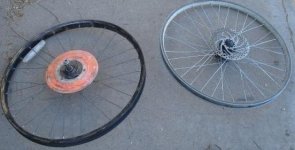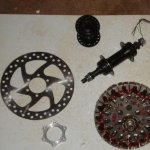Not much progress on CB2 itself. Seems like every time I sit down to work on it either I find a serious problem with whatever it was I was about to do to fix the chainline stuff, or something happens to pull me away from it. Or fabricating something turns out to not be possible with the tools I have (or I don't have the skill to do it yet). It's kind of depressing. At least I have the trike design in progress to get excited about. 
Using that smaller chainring off the Trek is impossible. It would bring the chain itself down to the point it would cut thru the frame. Any guide I put on there to route the chain around the frame would probably break under the motor power, probably when I have it heavily loaded and am far away from home.
Any guide I put on there to route the chain around the frame would probably break under the motor power, probably when I have it heavily loaded and am far away from home. 
To keep the chainline straight on the top where the load is, I have to keep a large chainring on the receiving crankshaft. So it is back to fixing one of the previously destroyed ring sets. Maybe I can mix and match them well enough to double up thinner rings, then use BMX chain for strength. Bolt or weld the ring set together.
Considering welding a threaded section from either a BB cup or a rear hub to the motor shaft's hub end, then putting a freewheel cassete smallest sprockets I can get away with on there. That would get me a freewheel so that I would not be driving the motor when pedalling.
Also considering taking a BB cup and welding it's cup end to the right end of the threaded part of a rear hub. Then welding it's nut end to the face of a steel square-taper crank. The cup would need to be bored out enough to be able to get to the nut and crank threads, so I could still tighten or remove it later.
That would give me a long enough threaded cylinder to do what I originally set out to do for leftside chainrings, which was to put a couple of freewheels on that threaded cylinder with spacers to line up the chains as needed, and allow both motor and pedals to drive the wheel without driving each other.
Problem is, I am not sure that the welding would take the torque, or that the crankshaft itself would take it either, with the load cantilevered out that far. Originally the custom-made cylinder design would have had the motor load still over the actual crankshaft, but both of these would end up out beyond the end of the shaft, putting quite a load on the welds.
So...CB2 is stalled.
Using that smaller chainring off the Trek is impossible. It would bring the chain itself down to the point it would cut thru the frame.
To keep the chainline straight on the top where the load is, I have to keep a large chainring on the receiving crankshaft. So it is back to fixing one of the previously destroyed ring sets. Maybe I can mix and match them well enough to double up thinner rings, then use BMX chain for strength. Bolt or weld the ring set together.
Considering welding a threaded section from either a BB cup or a rear hub to the motor shaft's hub end, then putting a freewheel cassete smallest sprockets I can get away with on there. That would get me a freewheel so that I would not be driving the motor when pedalling.
Also considering taking a BB cup and welding it's cup end to the right end of the threaded part of a rear hub. Then welding it's nut end to the face of a steel square-taper crank. The cup would need to be bored out enough to be able to get to the nut and crank threads, so I could still tighten or remove it later.
That would give me a long enough threaded cylinder to do what I originally set out to do for leftside chainrings, which was to put a couple of freewheels on that threaded cylinder with spacers to line up the chains as needed, and allow both motor and pedals to drive the wheel without driving each other.
Problem is, I am not sure that the welding would take the torque, or that the crankshaft itself would take it either, with the load cantilevered out that far. Originally the custom-made cylinder design would have had the motor load still over the actual crankshaft, but both of these would end up out beyond the end of the shaft, putting quite a load on the welds.
So...CB2 is stalled.


